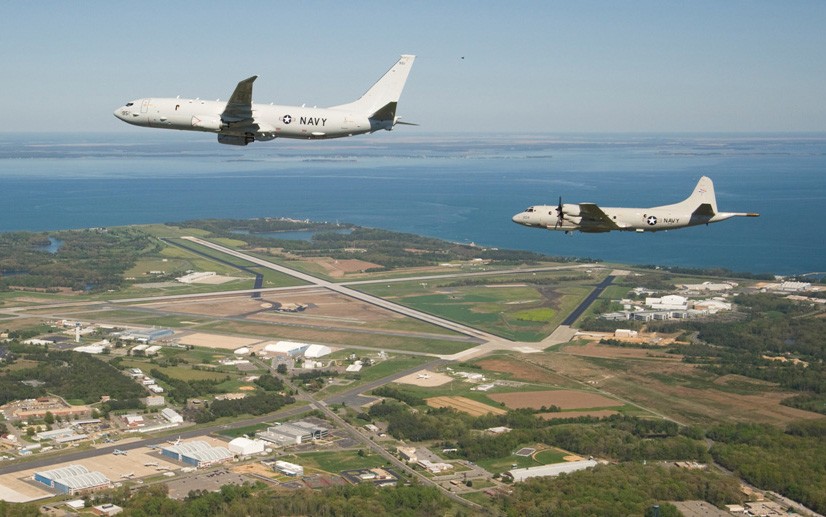Patrol and Reconnaissance Wing Eleven's history and reputation are unparalleled. Commissioned on Aug. 15, 1942 at Norfolk, Va., Patrol Wing Eleven relocated five days later to San Juan, Puerto Rico to provide support for allied shipping convoys in the Navy's Caribbean Sea Frontier. As the Navy overcame Germany's Atlantic/Caribbean U-boat campaign, Wing Eleven PBY-5Ns patrolled a million square miles of ocean, providing spotting and assistance to scores of wounded allied ships and sinking 10 German submarines while damaging 18 others.
The post-World War II drawdown culminated for Wing-11 in 1950 with a homeport shift to NAS Jacksonville and a transition to the P-2V Neptune. Throughout the decade, Wing-11 squadrons continued to patrol vast areas in support of long-range reconnaissance and fleet exercises. Operational commitments grew as the Cold War intensified and Maritime Patrol Aviation (MPA) continued to refine warfighting competencies in anti-submarine warfare (ASW), aerial mine warfare, search and rescue, and aerial photographic intelligence.
MPA excellence continued in the 1960’s with Wing-11 aircraft on-station for the recovery of our first astronauts and in support of President Kennedy’s quarantine of Cuba at the height of the 1962 Missile Crisis. By 1970, Wing-11 squadrons had transitioned to the P-3 Orion. In the years that followed, Wing-11 squadrons recorded thousands of hours ‘on top’ of Soviet submarines in Cold War operations from Greenland, Iceland, Bermuda, Ascension, the Canary Islands and Azores, and bases throughout the Mediterranean.
Wing-11 units met the challenge of the immediate post-Cold War period, supporting Operation Desert Shield/Storm, establishing an airborne presence during the Balkan Wars of the 1990’s, and supporting counter narcotics efforts in the Southern Hemisphere. The Navy formally recognized the close link between VP and VQ missions in 1998, bringing Fleet Air Reconnaissance Squadron Two (VQ-2) into Wing-11 and amending the command name to Commander, Patrol and Reconnaissance Wing-11.
Wing-11 units continue to excel in multi-mission roles. P-3 Aircraft Improvement Program (AIP) delivers traditional maritime capabilities, real-time intelligence, surveillance, and reconnaissance (ISR), and standoff land attack missile (SLAM) capability to theater and fleet commanders. Wing-11 units proved their continued relevance and vitality during operations over Kosovo in 1999 and in subsequent stabilization efforts there.
The terrorist attacks of Sept. 11, 2001 signaled a new focus for Wing-11 units. In addition to traditional missions, units support homeland defense and the Global War on Terrorism in Operations Vigilant Shield and Enduring Freedom respectively. During Operation Iraqi Freedom, Wing-11’s VP-45 was the first east coast squadron to establish a permanent detachment site in Iraq, flying combat missions in direct support of the troops on the ground. Additionally, supporting Department of Defense’s initiatives, Wing-11 transferred administrative control of VQ-2 to Wing-10 in Whidbey Island, Wash., and subsequently acquired Jacksonville’s Aviation Support Detachment.
The BRAC decision in 1995 to shut down NAS Brunswick forced a major transition for Wing-11 with the arrival of Brunswick’s four squadrons beginning with VP-8 and VPU-1 in June 2009. Today, eight squadrons and Aviation Support Detachment fall under Wing-11, making it the first “Super Wing” in Maritime Patrol and Reconnaissance history.
Wing Eleven's squadrons include VP-5, VP-8, VP-10, VP-16, VP-26 and VP-45. Additionally, the unmaned patrol squadron is VUP-19. For more information on NAS Jacksonville-based patrol squadrons go to:
VP-5 "MAD FOXES"
VP-8 "FIGHTING TIGERS"
VP-10 "RED LANCERS"
VP-16 "WAR EAGLES"
VP-26 "TRIDENTS"
VP-45 "PELICANS"
VUP-19 "BIG RED"